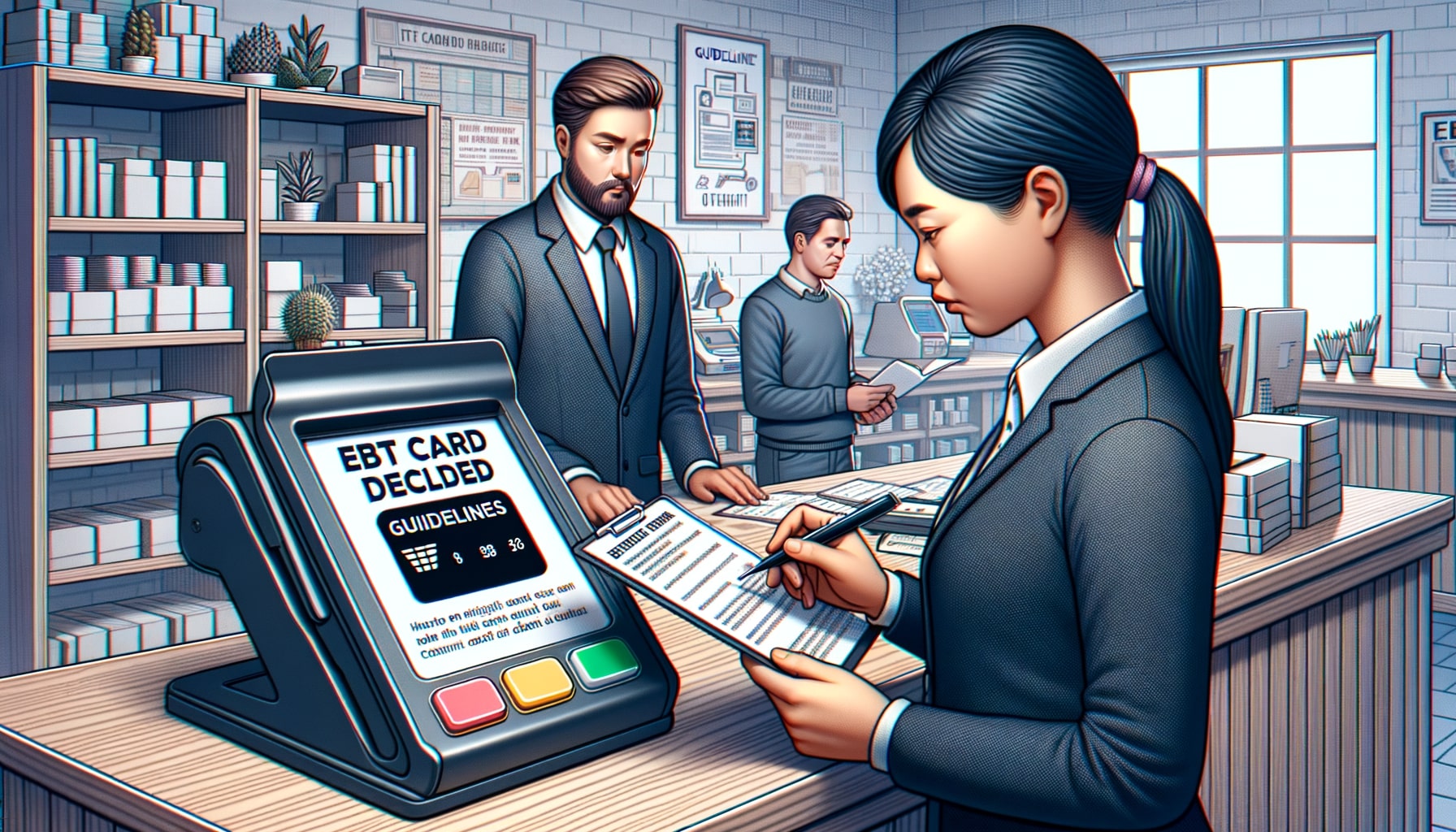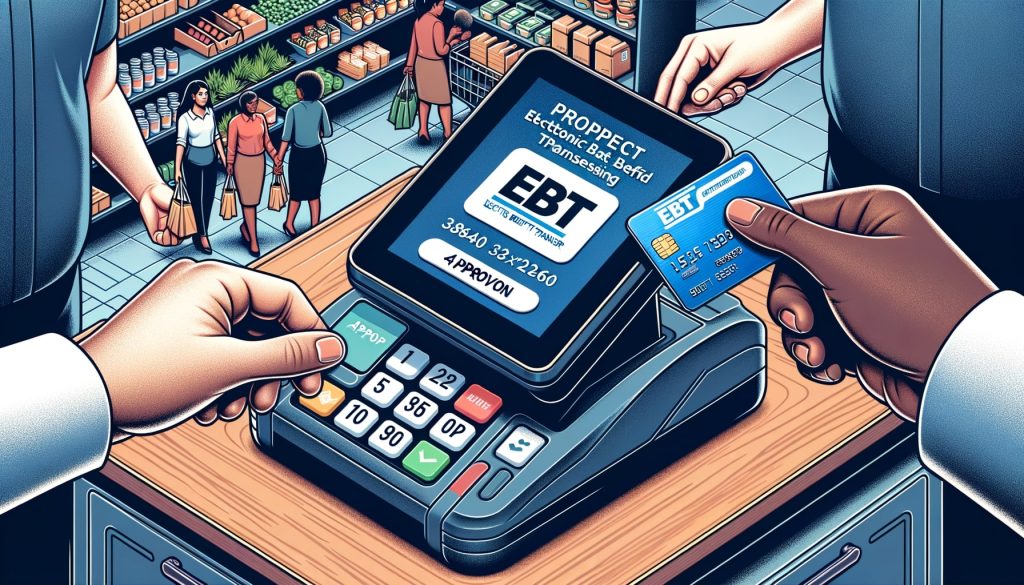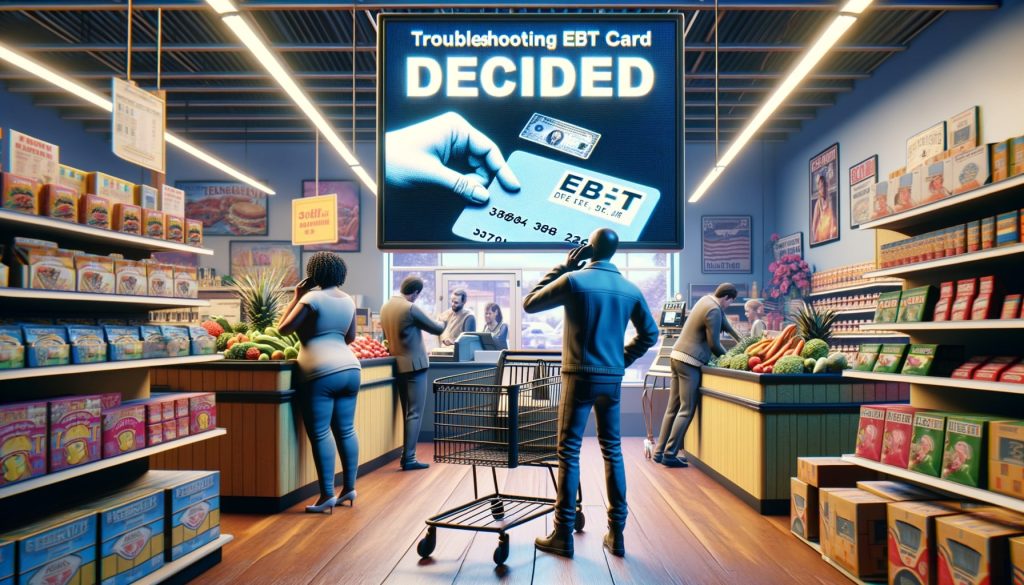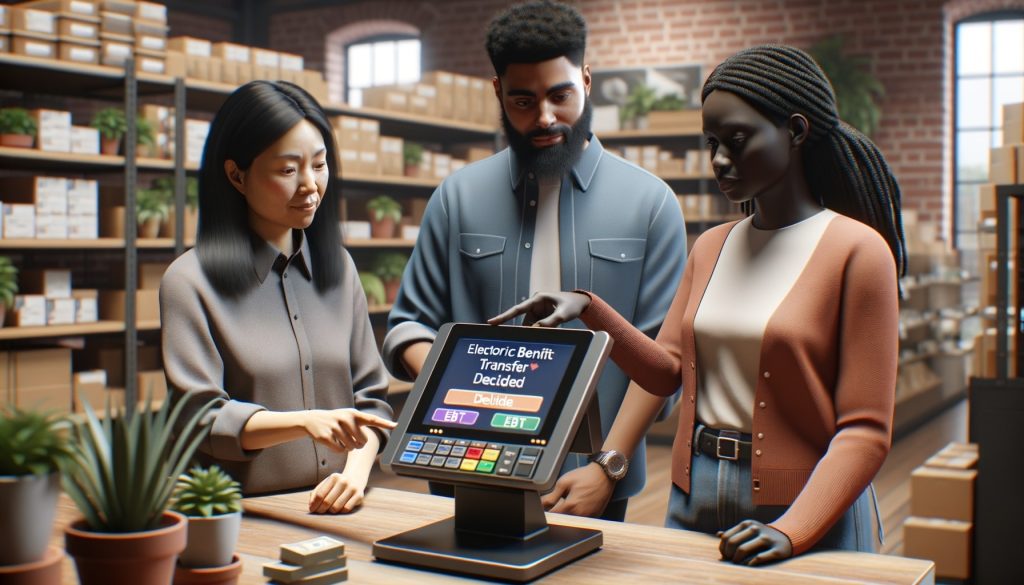
By manoj November 27, 2024
Electronic Benefit Transfer (EBT) cards are a vital resource for millions of low-income individuals and families across the United States. These cards allow recipients to access their government-issued benefits, such as Supplemental Nutrition Assistance Program (SNAP) funds, at authorized retailers. However, EBT card declines can occur, causing frustration for both customers and store owners.
In this comprehensive guide, we will explore everything you need to know about handling EBT card declines in your store, including common reasons for declines, ensuring proper EBT card processing, troubleshooting steps, training your staff, communicating with customers, preventing declines, and addressing frequently asked questions.
Common Reasons for EBT Card Declines

Understanding the common reasons for EBT card declines is crucial for store owners to effectively address and resolve these issues. Some of the most common reasons include:
- Insufficient funds: One of the primary reasons for EBT card declines is insufficient funds in the recipient’s account. This can occur when the recipient has exhausted their benefits for the month or if there was an error in the calculation of available funds.
- Expired or inactive card: EBT cards have an expiration date, and if a customer attempts to use an expired card, it will result in a decline. Additionally, if the card has been reported lost or stolen and deactivated, it will also be declined.
- Technical issues: Occasionally, technical issues can arise with the EBT system, leading to card declines. These issues can be temporary and may require troubleshooting or resolution from the EBT provider.
- Incorrect PIN entry: EBT cards require a Personal Identification Number (PIN) for transactions. If a customer enters an incorrect PIN multiple times, the card may be temporarily locked or declined.
- Restricted items: EBT cards can only be used to purchase eligible food items and non-alcoholic beverages. If a customer attempts to purchase restricted items, such as tobacco, alcohol, or hot prepared foods, the transaction will be declined.
Ensuring Proper EBT Card Processing in Your Store

To minimize EBT card declines in your store, it is essential to ensure proper EBT card processing. Here are some key steps to follow:
- Verify your store’s eligibility: Before accepting EBT cards, ensure that your store is authorized to participate in the SNAP program. Contact your state’s SNAP agency or visit the USDA’s website for information on eligibility requirements and the application process.
- Obtain the necessary equipment: To process EBT transactions, you will need a point-of-sale (POS) system or an Electronic Data Capture (EDC) terminal that is compatible with EBT cards. Ensure that your equipment is up-to-date and functioning properly.
- Train your staff: Provide comprehensive training to your staff on EBT card processing procedures. They should be familiar with the equipment, understand the eligibility guidelines, and know how to troubleshoot common issues.
- Display signage: Clearly display signs in your store indicating that you accept EBT cards. This will help customers identify your store as an authorized retailer and encourage them to shop with you.
Troubleshooting EBT Card Declines: Step-by-Step Guide

When faced with an EBT card decline, it is crucial to have a step-by-step troubleshooting guide to assist both your staff and customers. Here is a comprehensive guide to help you navigate through the process:
- Verify the card’s validity: Check the expiration date on the EBT card to ensure it is still valid. If the card is expired, inform the customer and advise them to contact their local SNAP office for a replacement.
- Confirm the customer’s PIN: If the customer is experiencing a decline due to an incorrect PIN, ask them to verify their PIN and try again. Remind them that entering an incorrect PIN multiple times can result in a temporary lock on the card.
- Check for technical issues: If the card is valid and the PIN is correct, but the transaction is still being declined, it may be due to a technical issue. Contact your EBT provider’s customer service to inquire about any ongoing system issues or to troubleshoot the problem.
- Verify available funds: If the customer’s card is not declined due to technical issues, check the available balance on their EBT account. If the balance is insufficient, inform the customer and suggest alternative payment methods or encourage them to visit their local SNAP office for assistance.
- Offer assistance: If the decline is due to restricted items, explain the eligibility guidelines to the customer and suggest alternative eligible items they can purchase. Provide guidance and support to ensure they can make the most of their benefits.
Training Your Staff to Handle EBT Card Declines

Properly training your staff to handle EBT card declines is crucial for providing excellent customer service and resolving issues efficiently. Here are some key steps to train your staff effectively:
- Educate on EBT program guidelines: Provide your staff with a comprehensive understanding of the EBT program guidelines, including eligible items, restrictions, and common reasons for card declines. This knowledge will enable them to assist customers and answer their questions accurately.
- Familiarize with EBT equipment: Ensure that your staff is familiar with the EBT processing equipment, including the POS system or EDC terminal. Train them on how to operate the equipment, troubleshoot common issues, and escalate problems to the appropriate channels.
- Role-play scenarios: Conduct role-playing exercises to simulate various EBT card decline scenarios. This will help your staff practice their problem-solving skills, improve their communication with customers, and build confidence in handling such situations.
- Provide ongoing training: EBT program guidelines and regulations may change periodically. It is essential to provide ongoing training to your staff to keep them updated on any policy changes or procedural updates related to EBT card processing.
Communicating with Customers about EBT Card Declines
Effective communication with customers about EBT card declines is crucial for maintaining positive relationships and ensuring customer satisfaction. Here are some tips for communicating with customers:
- Remain calm and empathetic: When a customer experiences an EBT card decline, it is essential to remain calm and empathetic. Understand that this situation can be stressful for them, and your approach can greatly impact their experience.
- Listen actively: Allow the customer to explain their issue and actively listen to their concerns. This will help you understand the problem better and provide appropriate solutions.
- Explain the decline reason: Clearly communicate the reason for the decline to the customer. Whether it is due to insufficient funds, an expired card, or a technical issue, provide a concise and understandable explanation.
- Offer alternative solutions: If the decline is due to insufficient funds or restricted items, suggest alternative eligible items or payment methods. This will demonstrate your willingness to assist the customer and ensure they can still make their purchases.
- Provide contact information: If the decline is due to a technical issue or requires further assistance, provide the customer with contact information for your store’s customer service or the EBT provider’s customer support. This will enable them to seek additional help if needed.
Preventing EBT Card Declines: Best Practices for Store Owners
While it is impossible to eliminate EBT card declines entirely, implementing best practices can significantly reduce the occurrence of such issues in your store. Here are some best practices for store owners to prevent EBT card declines:
- Regularly update equipment: Ensure that your EBT processing equipment is up-to-date and functioning properly. Regularly update software and firmware to avoid compatibility issues and technical glitches.
- Train staff on eligibility guidelines: Continuously educate your staff on the eligibility guidelines for EBT purchases. This will help them guide customers in selecting eligible items and prevent declines due to restricted purchases.
- Monitor available funds: Regularly monitor the available funds on your customers’ EBT accounts. This will allow you to inform customers in advance if their balance is low, preventing declines due to insufficient funds.
- Display clear signage: Clearly display signs in your store indicating that you accept EBT cards and provide information on eligible items. This will help customers make informed choices and reduce the likelihood of declines.
- Offer customer support: Establish a dedicated customer support line or desk to assist customers with EBT card declines. Train your staff to handle such inquiries efficiently and provide prompt resolutions.
Frequently Asked Questions (FAQs)
Q1. What should I do if a customer’s EBT card is declined due to insufficient funds?
If a customer’s EBT card is declined due to insufficient funds, inform them of the issue and suggest alternative payment methods or eligible items they can purchase within their available balance. Encourage them to visit their local SNAP office for assistance if needed.
Q2. Can I manually enter an EBT card number if the magnetic strip is damaged?
No, it is not recommended to manually enter an EBT card number if the magnetic strip is damaged. Manual entry can increase the risk of fraud and may not be accepted by the EBT system. Advise the customer to contact their local SNAP office for a replacement card.
Q3. How can I prevent EBT card declines due to restricted items?
To prevent EBT card declines due to restricted items, ensure that your staff is well-trained on the eligibility guidelines. Display clear signage indicating eligible items and provide guidance to customers on alternative eligible options.
Q4. What should I do if a customer’s EBT card is declined due to a technical issue?
If a customer’s EBT card is declined due to a technical issue, contact your EBT provider’s customer service for assistance. They will be able to troubleshoot the problem and provide guidance on resolving the issue.
Q5. How can I stay updated on changes in EBT program guidelines?
To stay updated on changes in EBT program guidelines, regularly visit your state’s SNAP agency website or the USDA’s website. They provide information on policy changes, procedural updates, and any other relevant announcements.
Conclusion
Handling EBT card declines in your store requires a comprehensive understanding of the common reasons for declines, proper EBT card processing procedures, troubleshooting steps, staff training, effective communication with customers, and best practices for prevention.
By following the guidelines outlined in this article, you can minimize EBT card declines, provide excellent customer service, and ensure a positive shopping experience for all customers. Remember, proactive measures, ongoing training, and open communication are key to successfully managing EBT card declines in your store.